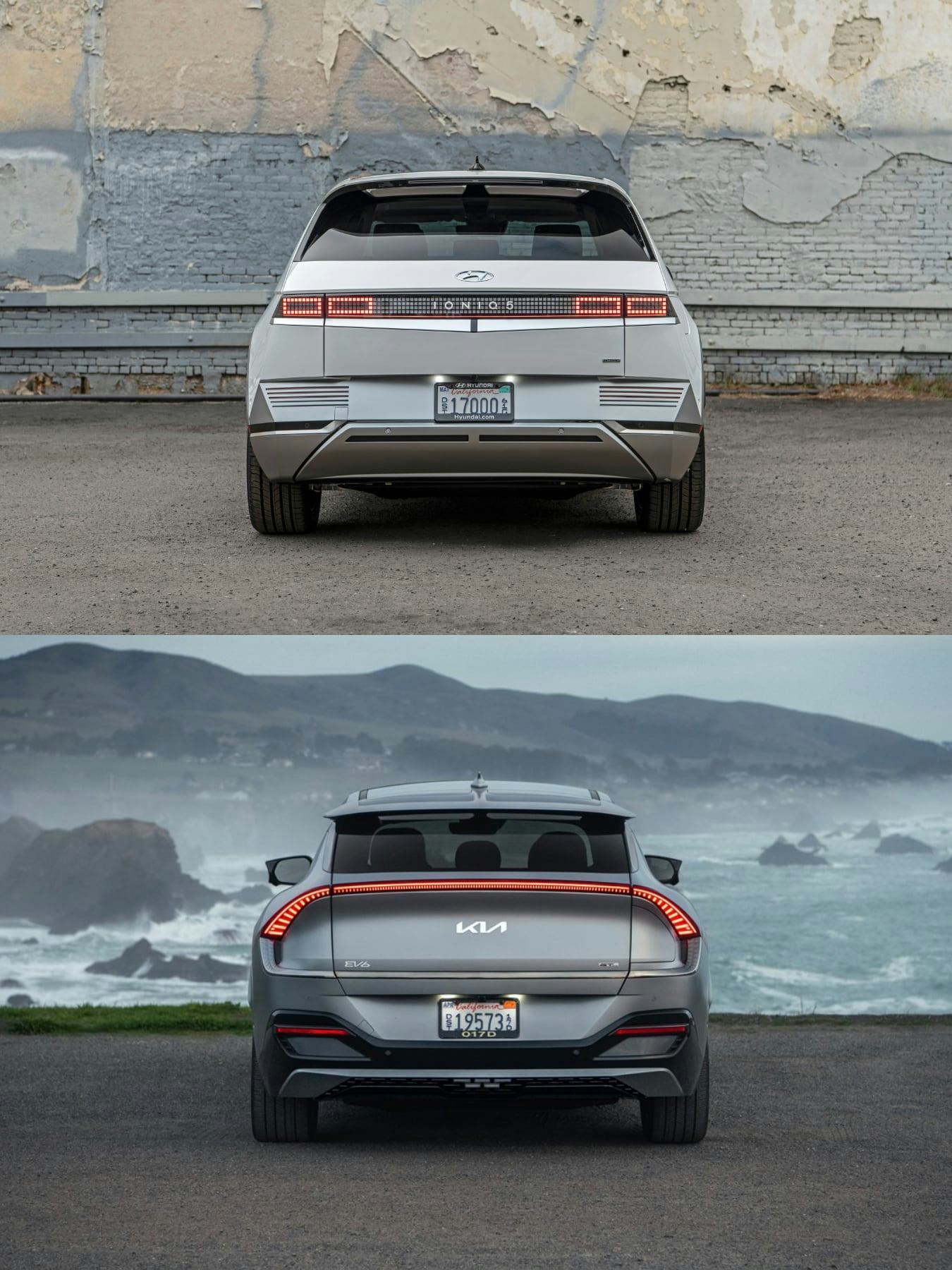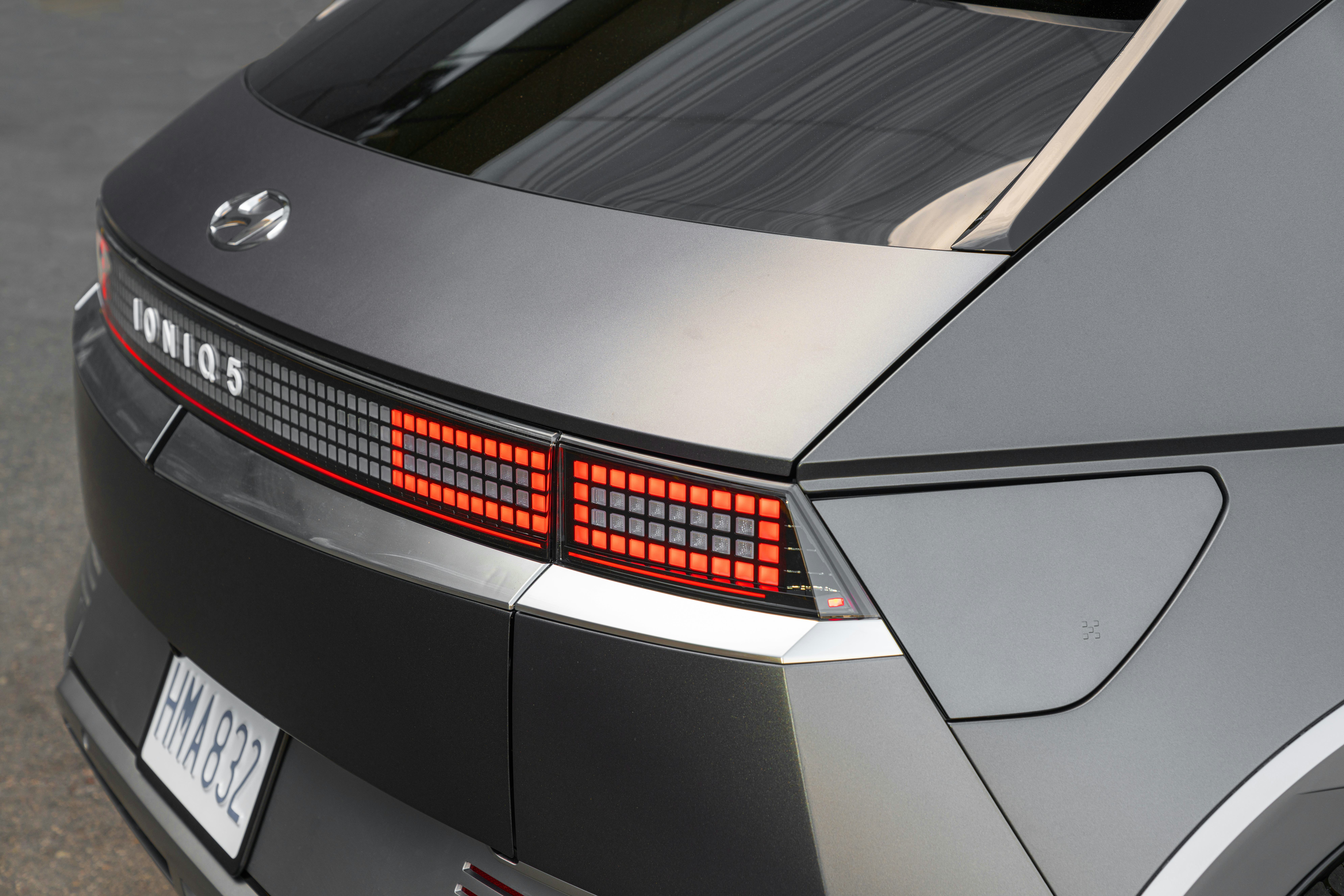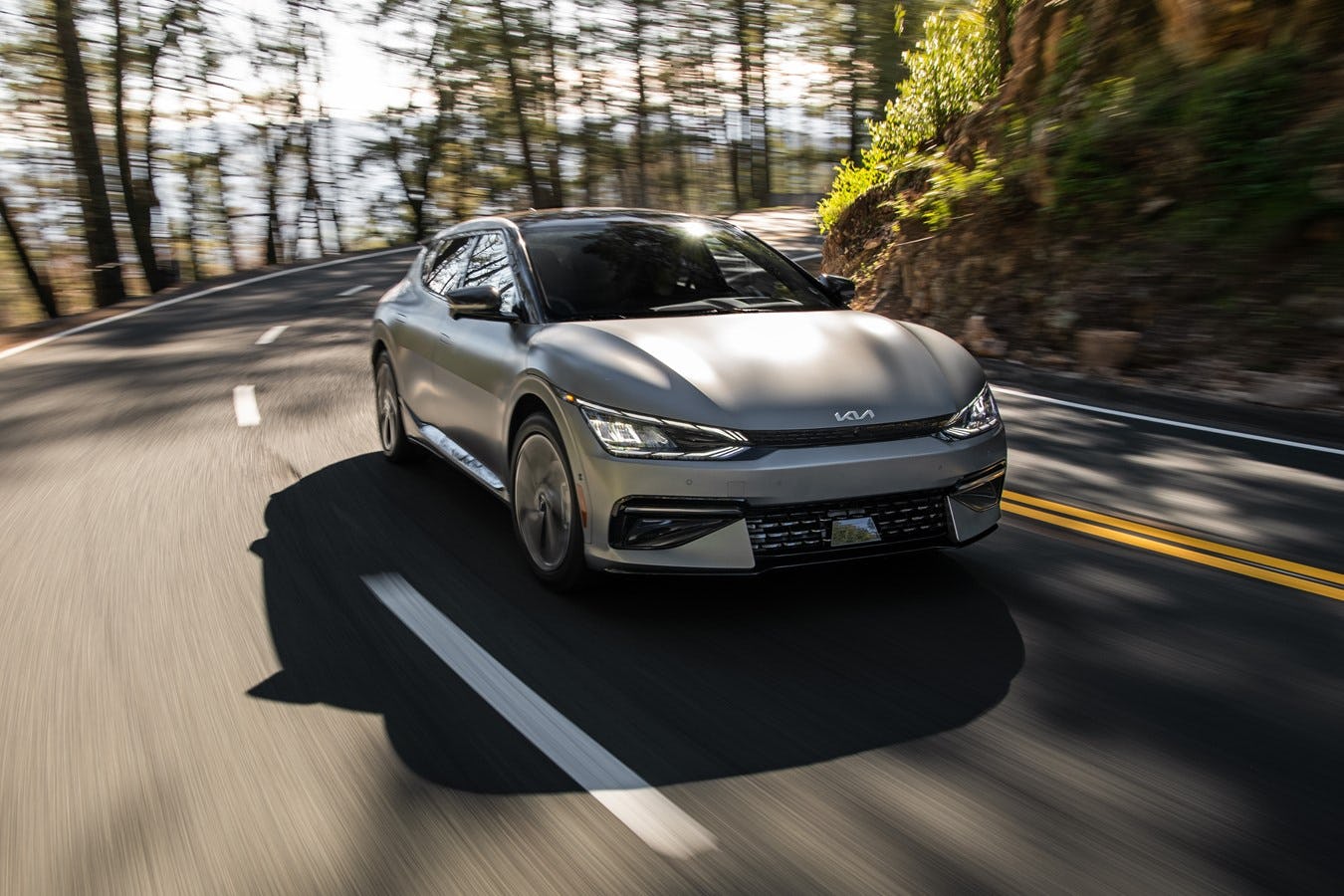
Perhaps the largest obstacle to EV adoption is charging — particularly fast charging in public. Though the vast majority of journeys are well within the abilities of even the shortest-range electric car, people still worry about that once-a-year trip to Grandma’s house upstate (even if they never actually make the trip).
That’s why expansive public fast-charging networks are so critical to EV adoption. If you can’t charge at all on the way to Grandma’s house, you definitely can’t complete the journey.
See also: Hyundai Ioniq 5 Review: One essential feature makes this the EV to beat
But charging speeds are nearly as important. EV skeptics are constantly talking about how they don’t want to wait an hour for their electric car to charge, and that’s a reasonable concern. If your destination is three hours away and you have to stop for 45 minutes to charge, that’s a significant imposition — and that’s why the Hyundai Ioniq 5 and the Kia EV6 are so exciting.
Built on the same E-GMP platform, they use a next-generation 800-volt architecture. It’s the same type of system used in high-end electric performance cars like the Porsche Taycan, and it’s a huge competitive advantage over 400-volt competitors like the Ford Mustang Mach-E and Volkswagen ID.4.

Ford says the Mach-E can go from 10 percent to 80 percent charge on a DC fast charger in approximately 45 minutes. That’s somewhere around 210 miles of range.
The EV6 and Ioniq 5 do it in just 18 minutes on a 350 kWh charger. That fast charging is fast approaching the length of a normal gas station fillup if you include a restroom break and shopping for road trip Pringles.
Charging speed alone is enough to push me into the arms of the nearest Hyundai or Kia salesperson, but these two cars are excellent in many other respects.
It’s also worth noting that Hyundai and Kia share a parent company... or Hyundai owns part of Kia which owns part of Hyundai... OK, it’s complicated. The point is, both cars are built on the same platform, with the same batteries, and largely the same motors. But they’re still quite different.
If you’re trying to choose between the Ioniq 5 and EV6 and you haven’t quite made up your mind yet, here’s everything you need to know about how the crossovers compare stats- and feature-wise, and the things you’ll want to consider as you make your electric crossover purchase decision.
Hyundai Ioniq 5 vs. Kia EV6: Price
Each car comes in a variety of trim levels, all generally in the same price range.
The Kia EV6 Light starts at $42,115 with a single-motor rear-wheel drive and a smaller battery option. It runs all the way up to the EV6 GT-Line, a dual-motor, all-wheel-drive option for $57,115.
The base Hyundai Ioniq 5 SE RWD Standard Range is $40,915, making it slightly cheaper than the entry-level Kia. The top-of-the-range Ioniq 5 Limited AWD lands at $55,615, making it roughly equivalent to the Kia.
All versions are eligible for a $7,500 federal tax credit and whatever available state credits you may be eligible for. Though both vehicles are for sale and are starting to arrive at dealerships, they are still hard to find and dealers may be adding “market adjustments” (AKA, jacking up the price) to any unsold cars.
Hyundai recently warned its dealers about the reputational dangers of steep markups, but it remains to be seen if that’ll be effective.
Hyundai Ioniq 5 vs. Kia EV6: Range
Both cars have the same 77.4 kWh or 58 kWh batteries, but ranges vary slightly depending on configuration.
There are three different variants of the Hyundai Ioniq 5:
- 220 miles — The SE Standard Range is equipped with a smaller 58 kWh battery pack and a less-powerful rear motor. It will be available later than the rest of the line.
- 256 miles — The SE/SEL/Limited trims with the larger 77.4 kWh battery and dual-motor AWD option get slightly less mileage than the RWD option.
- 303 miles — The larger battery, single-motor RWD version is the max mileage option, trading a bit of horsepower for a longer range.
For the Kia EV6:
- 232 miles — The Light trim is equipped with a 58kWh battery and a single RWD motor.
- 274 miles — The dual-motor AWD Wind and GT-Line trims come with a 77.4 kWh battery, but offer significantly faster performance traded off with slightly lower mileage. The First Edition EV6 offers the same range.
- 310 miles — The single-motor RWD Wind and GT-Line trims come with a 77.4 kWh battery.
Hyundai Ioniq 5 vs. Kia EV6: Charging Speed
Both the cars have similar charging specs since they have the same battery and platform:
- They support both 800-volt and 400-volt charging.
- On an ultra-fast 350-kilowatt charger, the cars can charge the 77.4 kWh battery pack from 10 to 80 percent in just 18 minutes.
- They can pick up 68 miles of range in five minutes if you only have time for a top-up.
- A residential Level 2 charger can fill the battery in a little under 7 hours.
You can also uncharge the Ioniq 5 and EV6 by plugging in an adapter to the charging port that allows the car to be used as a giant battery backup, providing up to 1.9 kW of power via a standard 120-volt power outlet.

Hyundai Ioniq 5 vs. Kia EV6: Horsepower and Torque
These are very similar as well, with one exception: a forthcoming performance version of the Kia EV6.
Hyundai Ioniq 5:
- 168 HP, 258 lb-ft — The single-motor, standard range RWD option
- 225 HP, 258 lb-ft — The single-motor, extended range RWD option
- 320 HP, 446 lb-ft — The dual-motor, extended range option
Kia EV6:
- 167 HP, 258 lb-ft — RWD with 58.0 kWh battery and rear motor
- 225 HP, 258 lb-ft — RWD with 77.4 kWh battery and rear motor
- 320 HP, 446 lb-ft — AWD with 77.4 kWh battery and dual motors
- 576 HP — The forthcoming GT trim has AWD and 77.4 kWh battery and more powerful dual motors.
Hyundai Ioniq 5 vs. Kia EV6: 0-60 Time
There are a range of 0 to 62 mph acceleration times for the Hyundai Ioniq 5:
- 5.1 seconds for dual-motor, extended range... though Motor Trend clocked it at just 4.4 seconds, while Car and Driver reports 4.9 seconds.
- 7.3 seconds for single-motor, extended range
- 8.5 seconds for single-motor, standard range
There are three currently available Kia EV6 specs here:
- 5.1 seconds for dual-motor, extended range
- 7.2 seconds for single-motor, extended range
- 8.0 seconds for single-motor, standard range
It’s likely that these estimates are conservative given what publications are seeing from the Ioniq 5, but this is what Kia and Hyundai has quoted. The forthcoming Kia EV6 GT is said to make 0-60 in under 3.5 seconds.

Hyundai Ioniq 5 vs. Kia EV6: Driver Assist Features
Neither car is self-driving, and both use basically the same advanced driver assist system.
They have next-generation Highway Driving Assist technology that combines adaptive cruise control with active lane centering to reduce the stress of driving. It’s not fully hands-free like GM’s Super Cruise or Ford’s BlueCruise, but it will significantly reduce the amount of work a driver needs to do.
Both the Kia and Hyundai have a host of other safety features, including automatic emergency braking, automatic avoidance steering if another car starts to come into your lane, and steering assistance to avoid other obstacles in your path.
In its review of the EV6, Newsweek wrote that the Kia’s driver-assist tech “seems more dialed in than its Hyundai competitor.”
Hyundai Ioniq 5 vs. Kia EV6: Design
This is where the Ioniq 5 and EV6 really diverge. Hyundai’s “Parametric Pixel” design language is everywhere on the Ioniq 5, and it’s very much a love-it-or-hate-it situation. If you like retro-futuristic design, you might love the Ioniq 5.
The Hyundai also feels much more spacious and EV-like on the inside, with flat floors and not much between the two front seats. It feels different from other cars, which is good or bad depending on your perspective.
On the other hand, the EV6 feels much sportier, with sensual curves in the sheet metal rather than the fixed edges of the Ioniq 5. On the inside, the Kia feels much more like a traditional car (though it has largely the same dimensions as the Hyundai) thanks to a larger center console where the shift knob, start button, phone charger, and cupholders are located.
The two cars have a very different feel and personality to them. It’s likely that buyers will look at both and immediately know which one fits them best.
The good news is that if you don’t have a preference between the two, you can buy whichever one your dealer has in stock.

Hyundai Ioniq 5 vs. Kia EV6: Warranty
Both cars come with identical warranties. There’s a 5-year/60,000-mile bumper-to-bumper, plus a 10-year/100,000-mile powertrain coverage (including on the battery).
Hyundai Ioniq 5 vs. Kia EV6: Availability
Both the Hyundai Ioniq 5 and Kia EV6 have begun shipping to dealers, and availability varies greatly. Some dealers have cars available on the lot for purchase, while others have long waiting lists.
If you’re in the market for either of these cars, be prepared to shop around and, if you want one immediately, you may need to pay significantly over MSRP for the privilege. Otherwise, ordering through your local dealership is likely your best bet.
Stay on top of the automotive revolution and sign up for Jordan Golson’s free car reviews newsletter.







